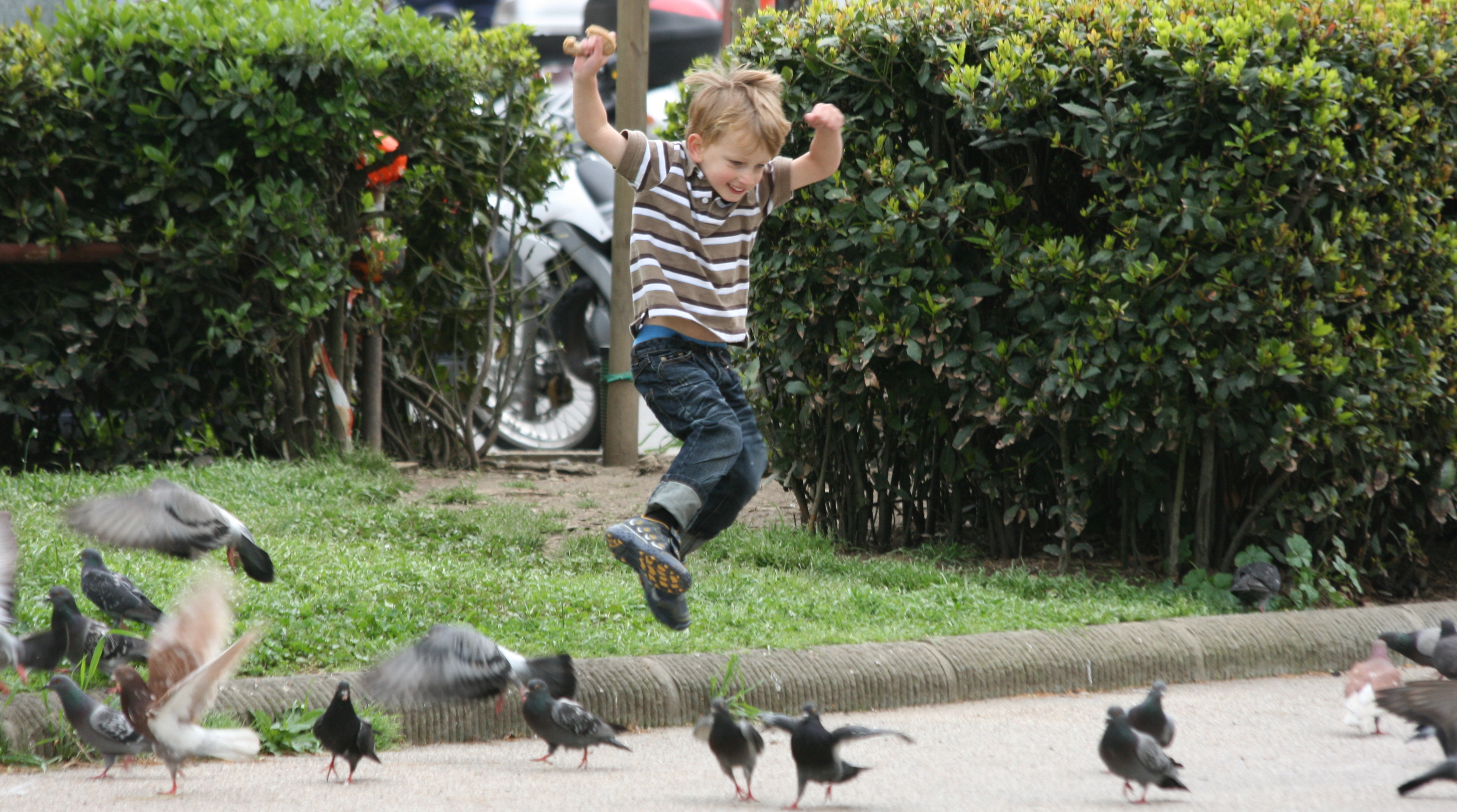
To make our Sabbatical a success we devised and stuck with a few basic rules. These basic rules worked for us, you might want to add some and disregard others.
We planned our sabbatical with our son, his needs, and limitations in mind. At least in our experience kids at a young age are far more flexible than grown-ups seem to think as longs as basic rules are followed.
Here Are Our Basic Rules
Don’t Be Too Ambitious
One of the basic decisions we made was to not be too ambitious. I know people who have seen large chunks of India plus Sri Lanka and/or Nepal in less than four weeks. We saw Kerala and not even all of it.
All my life – or at least for a really long time – I dreamt of a boat tour down the Mekong River, through Laos and Vietnam and into Cambodia. I am dreaming about it to this day. The idea of watching over a three year old 24 hours a day to make sure he won’t fall off the boat and drown killed my desire for that particular adventure. The same is true for the camel-back tour through Rajasthan and hiking in Bolivia. These things sounded alluring and still do but the price to pay for these experiences, I realized, was too high. If you travel with a child you have to make peace with the fact that you won’t be fulfilling all of your life’s travel plans in one trip.
Our basic decision early on was to make it easier on our child by choosing fewer locations and staying longer. The plan of staying one month per location sort of naturally followed from there. A month is a long enough period of time to get adjusted to the time zone, climate, habits, neighborhoods, food etc and not long enough to go crazy if for some reason or another the location does not meet expectations.
Have a Home Away from Home Wherever you Go
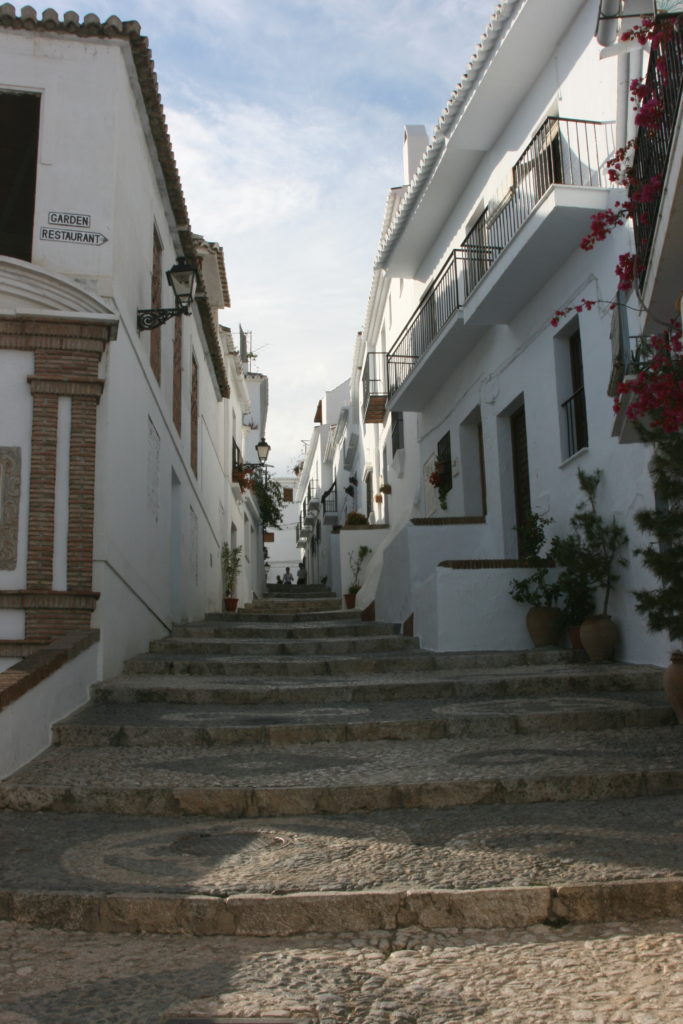
The second of our basic rules – and I believe a crucial one – was to rent a home away from home – a house or apartment – in each location. This place, whatever and wherever it was, we referred to as “home” as in “we are all tired, let’s go home now.” It was the save haven, the place to return to after a day of adventures or a trip somewhere.
Sleeping in the same bed most nights, knowing where his toys were and that five blocks down the street there is a food market where we buy cookies helped a lot getting him settled. Our home was an anchor onto which our child could hold onto in a time of change and more experiences than many adults have made in their life time.
This approach proved extremely valuable. Our son soon developed his own little routine to make a new place is own which involved taking pretty much all the kitchen tools out of the drawers, putting them in his play area and playing with them. I don’t know why he did that, maybe the familiarity of spoons, lemon juicers, pans and pots helped him internalizing the idea of “home”. It doesn’t really matter why he did it. The important part is, that he developed that routine and we let him do it even if it meant stepping over a motley array of kitchen tools every time we left the house or chasing down the potato peeler mixed in with Lego pieces. It helped him adjust and kept him happy.
Live there, don’t just visit
Another crucial point that follows from staying longer: we went to each place with the goal of living there for an –albeit short – period of time, instead of just being a tourist. This is an important difference in attitude. The goal is to immerse oneself in and share the local experience as much as possible rather than just touching the surfaces and hopping from one tourist sight to the next never pausing to see how people live.
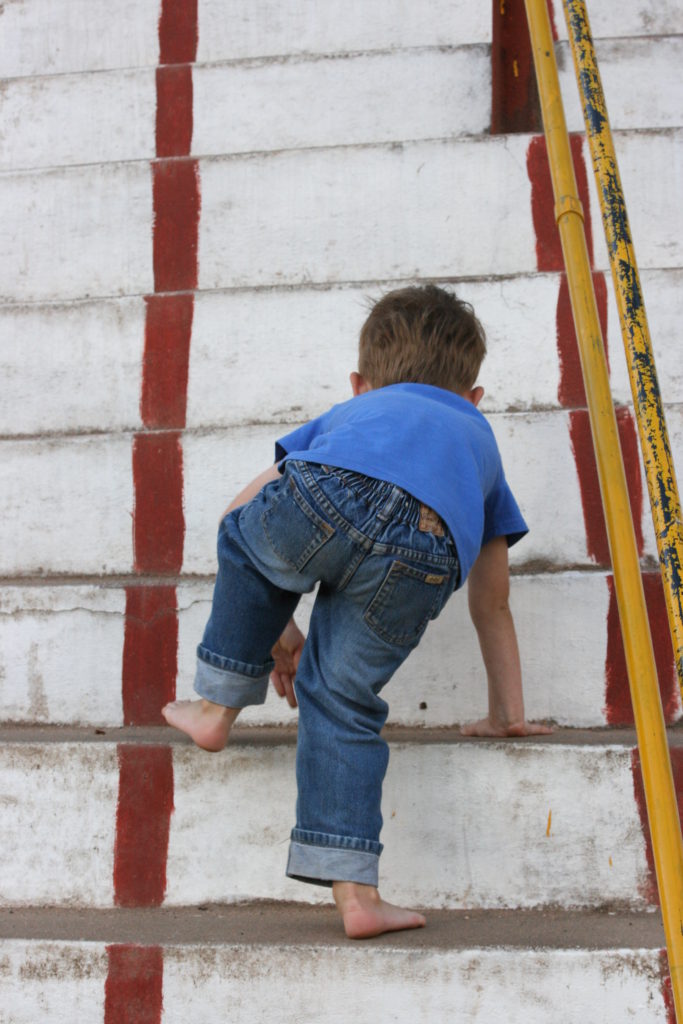
I think our son benefitted from the slower pace of this approach. We didn’t have a long list of sights we needed to see but took our time, explored, made time for play, stopped at things that interest him rather than hurrying from one attraction to the next and always rushing him.
A lot of what we missed in terms of big sights, like the Taj Mahal, we made up in small experiences like being the only non-Indians at a local temple festival complete with elephants, and fire crackers. We would have never found out about this event which is not listed in any tourist guide had we not spent a lot of time in Rickshaws talking to the drivers and inquiring about such occasions and – importantly – connecting with the people well enough so they would actually tell us about their festivals and events.
Another important thing to do is share the experience of the locals: buy your food where they do, visit the restaurants, parks they do, use the transportation they do – at least if at all feasible.
One of the first things we were told by the US expat who picked us up at the airport in Merida was to not eat any food from the food stalls because it is dirty and dangerous. The same evening we went to the plaza and ate tacos from the food stalls. We never once fell ill!
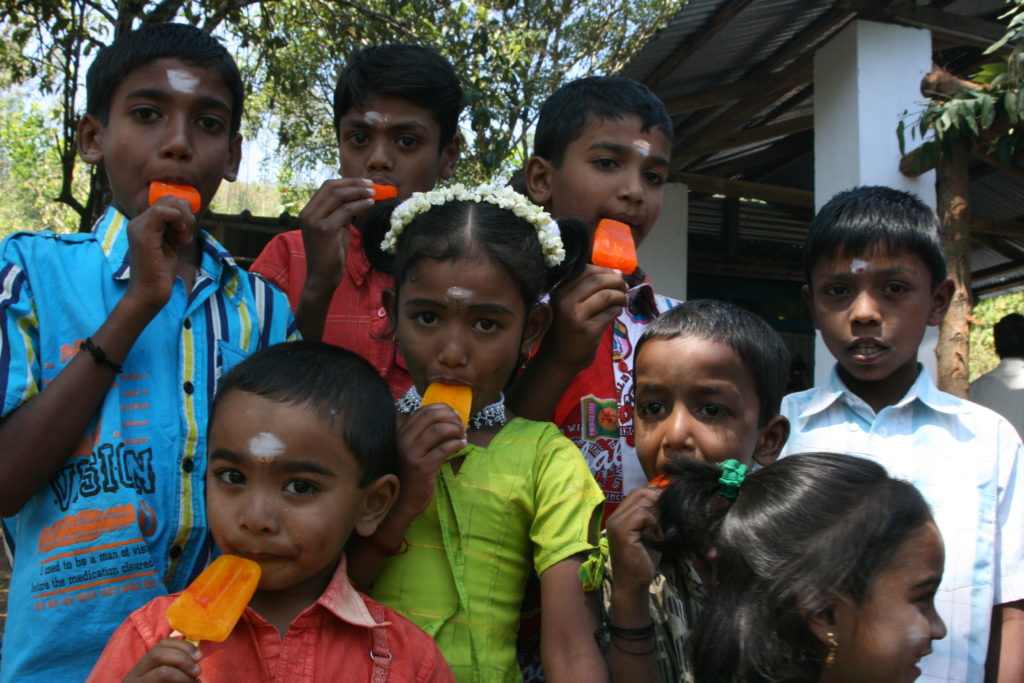
Of course one has to be reasonable but if we walked by a food stand and the food was freshly prepared and the proprietors were clean and diligent we did not see a reason not to eat the food. The fact that a restaurant has a proper kitchen does not guarantee that food is handled properly and is fresh. A stall, in fact, has the advantage that you can watch the preparation of the food with your own eyes. We wouldn’t eat at food stalls that smelled bad or had food sitting around waiting for customers – but then again I don’t go to MacDonald’s either to eat those pre-prepared and warmed up burgers they serve there.
Safety first – but don’t be paranoid
Safety is a very important consideration. Quite a number of countries and places we ruled out simply because of safety concerns. Safety is a very individual experience, what is comfortable for some people is scary for others. The trick is to arrive at a reasonable compromise between safety and paranoia.
To accomplish that, one needs to choose the sources of information wisely. In my experience it is best to talk to people who have been to these countries and get their take on the situation. If one knows these people to be reasonable and trustworthy, all the better. No amount of reading can make up for the personal feedback and impressions.
Getting personal impressions from the web is second best. Reading blogs and comments from people on sites like Traveladvisor can help a lot. The beauty of sites like that is that you get comments and input from a variety of people not just the author of one book. If 273 people say they liked it and felt absolutely safe you can probably disregard the four who wrote something different.
Traveling with a child, esp. a young one, adds an extra dimension of safety requirements. More about this in the section about choosing a location.
A word of caution: When I first started doing research on our target countries I landed on the CIA Travel Advisory webpage and what I read was so scary that I was reconsidering the wisdom of this trip. Fortunately, I have a good calibrator: I turned to the section about Germany, my home country, where I grew up and which I visit at least once a year and therefore have a pretty good understanding of. After reading the article about safety I came away with the expression that terrorists are crisscrossing the country freely only being held up by the frequent large public strikes and demonstrations. I know that isn’t true. There are terrorist cells in Germany, just like in the US and every other industrialized nation and there are occasional strikes, however outside freak accidents and a few unsavory neighborhoods in large cities Germany it is a perfectly safe place.
So choose your sources wisely, caution and awareness are good, expecting robbers, terrorists and murderers around every corner is not and will put a serious damper on your trip.
Scrupulously plan the big picture, remain flexible with the details
I had the luxury of spending considerable time on planning our trip and it was well worth it. I scrupulously planned the important things: the best flights, locations, apartments/houses, transportation to and from the airport, visa requirements, immunizations – both mandatory and recommended-, cost of living, big events, etc.
The rest, I decided, would just happen – and it did. I could have planned every day, made lists of attractions to visit, things to do, museums to see. We could have rented cars in advance or googled restaurants offering US-style food. I didn’t and our trip was better for it.
Once there, things always were different than we expected. We learned about new things to see and do. We decided to take the bus to the beach like the locals and not rent a car or we rented a car at a local shop which was cheaper. We discovered where the action is in the evening, where the best food was to be had and found secondary and tertiary attractions that travel guides only mention is passing but are often just as interesting as the major sites.
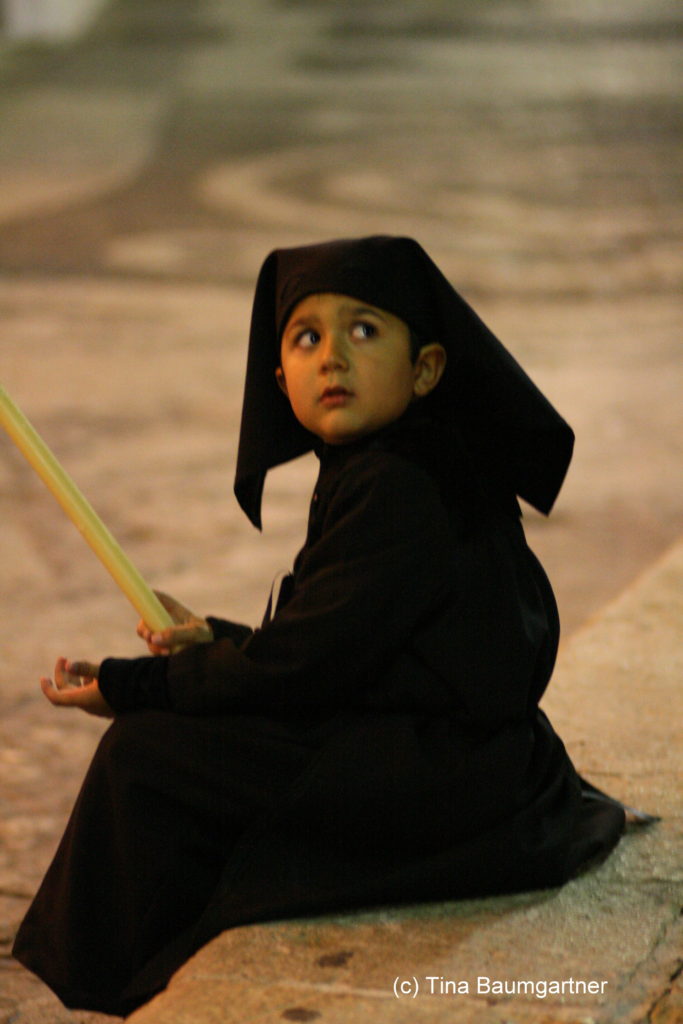
We found The Good Friday procession in Frigiliana, our small Andalucian home town, very beautiful, solemn and mesmerizing. I am sure Malaga had the bigger procession and Antonia Banderas was there to participate (as every year) but we saved ourselves 2 hours driving, an overtired child and parking hassle. I took some of the best pictures I have ever taken 10 meters from the entrance of our house.
Summary
Following a few basic rules, we believe, made our trip a success for all three of us. Those were:
- we did not try and do and see too much. We kept it simple and avoided stressing our son
- we had a home away from home everywhere we went providing stability and a sense of belonging
- we tried as much as we reasonably could to live like a local rather than just scratching the surface as a tourist
- safety comes first but being paranoid is counterproductive
- I planned the important things like travel and house rental in detail, for a lot of the rest we improvised
